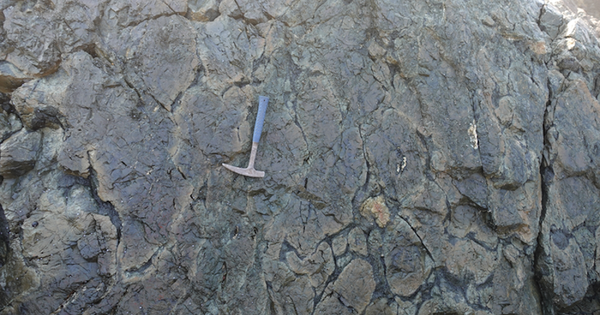The study of ancient ocean floors may aid in the discovery of minerals required for the production of electric vehicles and solar panels. The University of Queensland led a collaborative study that examined ocean floor remnants in eastern Australia and central Asia and used a method to date the age of calcite trapped inside.
Scientists have discovered evidence that the Earth’s inner core oscillates, contradicting previously held beliefs that it rotates at a faster rate than the planet’s surface. According to a new study, the relatively pristine coral populations of Western Australia’s inshore Kimberley region are better equipped to withstand ocean warming than the World Heritage-listed Ningaloo Marine Park.
A deep dive into the 5,500 marine RNA virus species recently identified by scientists has revealed that several may aid in the transport of carbon absorbed from the atmosphere to permanent storage on the ocean floor.
Extensively used grassland supports a high level of biodiversity, serves as a carbon sink, and provides fodder and food production. These ecosystem services, however, are jeopardized if productivity on these lands is maximized and thus their use is intensified. Researchers have now described how satellite data and machine learning methods can be used to assess the intensity of land use.
Researchers across many institutions are doing excellent work in this field, including UQ’s Centre for Geoanalytical Mass Spectrometry. Our hope is to expand our collaboration with industry and academia to increase the understanding and discovery of critical minerals in the future.
Dr. Renjie Zhou
The findings, according to Dr Renjie Zhou of UQ’s School of Earth and Environmental Sciences, could make it easier to source critical minerals used in renewable and clean technologies. “Calcite and other hydrothermal minerals are frequently observed in critical mineral deposits and form as a result of mineralising fluid activities,” Dr. Zhou explained. “Our findings demonstrate that we can trace the history of fluids in the Earth’s crust and predict when and what mineral resources they may generate.”
The renewable energy sector is expanding rapidly, driven by rising demand for technologies such as wind turbines, solar panels, electric vehicles, and batteries. “These frequently necessitate large quantities of critical minerals,” he explained. “Electric vehicles require up to four times the copper of conventional cars, and a single wind turbine requires several tonnes of rare earth metal permanent magnets.”

Dr. Zhou said being able to study and discover these minerals was going to become increasingly important. “Researchers across many institutions are doing excellent work in this field, including UQ’s Centre for Geoanalytical Mass Spectrometry,” Dr Zhou said. “Our hope is to expand our collaboration with industry and academia to increase the understanding and discovery of critical minerals in the future.”
Climate change is influencing how large whale species, including the critically endangered North Atlantic right whale, use habitats in the warming Gulf of Maine, according to new research, which shows that right whales’ use of Cape Cod Bay has shifted significantly over the last 20 years.
New models that show how continents were formed are providing new insights into Earth’s history and will aid in the understanding of natural hazards such as earthquakes and volcanoes. A new method for extracting and identifying microplastic particles from water samples was used on samples from the tropical Indian Ocean. As a result, the burden is clearly quantifiable.
According to new research, the ecological impact of invasive species is comparable to the combined effects of invasives and warming temperatures, drought, or nitrogen deposition. This suggests that managing invasive species at the local level is an important part of preparing for climate change.
















